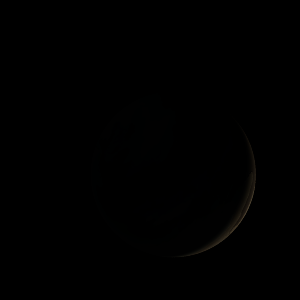| Fictional info (?) |
|---|
| Suggested name | Buzu Wazo |
| Planet type | Cold planet |
| The polar regions are constantly below 207°K (-66°C). |
| Atmosphere | Carbonyl sulfide | 53% |
| Ammonia | 24% |
| Hydrogen peroxide | 18% |
| Xenon | 3.8% |
| Sulfur dioxide | 0.036% |
| Atmospheric pressure | 5 bar |
 |
| Moon | Byabirya Gemunya | Very small potato shaped ice comet |
| Rooze Bya | Huge round ice asteroid |
| Dosuhie Dagyu | Huge almost round ice moon |
| Zehyuja Byu | Very small almost round gaseous asteroid |
| Pyojabya-ryo | Huge round rocky moon |
| Tabyopo'hyo | Huge round crater-filled comet |
| Robyo | Very small almost round ice planetoid |
| Ridopu | Medium-sized potato shaped rocky asteroid |
| Byubya Nose | Medium-sized round ice moon |
| Wokyapyu | Very small irregular rocky asteroid |
| Gyugo Myuma Ge | Large potato shaped rocky moon |
| Rowo-gyuhi Sahyu | Very small potato shaped ice planetoid |
| Toba'zape Kome-hyo | Medium-sized slightly egg-shaped ice moon |
| Risanu'gi | Large round gaseous asteroid |
| Chimyu Ho | Huge potato shaped rocky planetoid |
| Nnuhyo | Huge slightly egg-shaped ice planetoid |
| Nyunbi Re | Small round oceanic asteroid |
| Pyacha-fu | Very small potato shaped oceanic planetoid |
| Unumu Kya | Small slightly egg-shaped rocky asteroid |
| Punupape-tsugo | Large potato shaped gaseous moon |
| Kyuryo Chi | Large almost round ice moon |
| Byaipyo Suka | Medium-sized slightly egg-shaped crater-filled planetoid |
| Rutsubo Yuimocho | Large round oceanic comet |
| Rezopya | Medium-sized irregular rocky comet |
| Mesako'ryaro | Huge potato shaped ice asteroid |
| Yaryomu Shu | Medium-sized potato shaped oceanic planetoid |
| Tsumugyu Nyune | Small almost round oceanic planetoid |
| Hihya Gyua-hyo | Medium-sized almost round rocky moon |
| Chito Omuka | Medium-sized slightly egg-shaped gaseous moon |
| Gebya Mosemo-ma | Medium-sized irregular rocky asteroid |
| Keanyo-ku | Very small potato shaped rocky moon |
| Shikanyo'bukya | Medium-sized round gaseous asteroid |
| Dasho | Large round crater-filled moon |
| Ripyu Be | Small almost round rocky moon |
| Gonusho | Large round rocky asteroid |
| Tororojo Sho | Small slightly egg-shaped crater-filled comet |
| Rishi | Very small irregular ice planetoid |
| Google search for Buzu wazo |